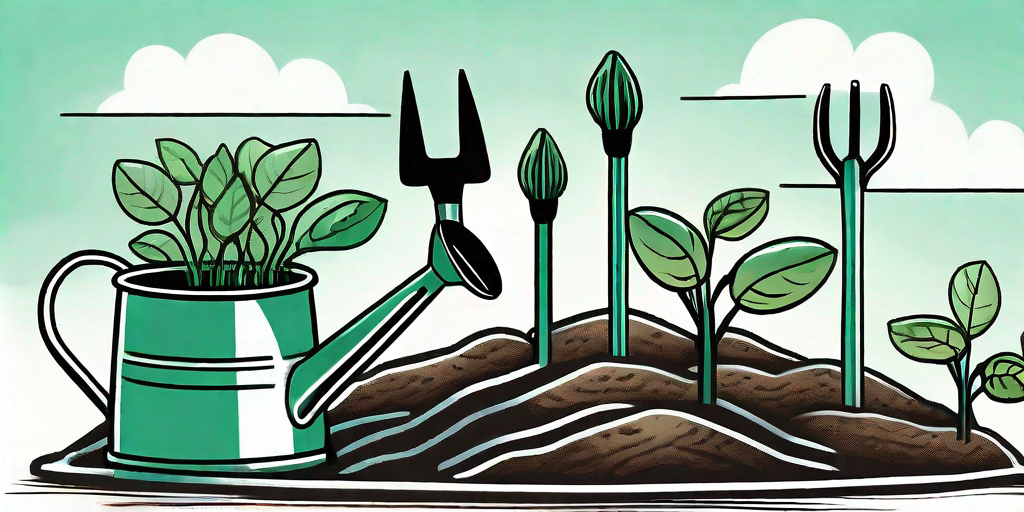
Welcome, fellow potato enthusiasts! If you're here, it's likely because you've got a burning desire to master the art of potato hilling. And who could blame you? There's nothing quite like the satisfaction of unearthing a bounty of spuds from your own backyard. But before we dive into the nitty-gritty of hilling, let's take a moment to appreciate the humble potato. It's versatile, delicious, and, if treated right, can be a gardener's best friend.
Understanding the Art of Potato Hilling
First things first, let's clear up what we mean by 'hilling'. No, it doesn't involve sending your potatoes on a hike up a steep slope. Hilling is the process of piling soil around the base of your potato plants as they grow. This technique serves a few key purposes: it prevents the potatoes from getting sunburned (yes, potatoes can get sunburned), it helps to keep the soil moist, and it can even increase your yield. So, it's safe to say that hilling is a pretty big deal in the potato-growing world.
But how do you hill a potato? Is there a right or wrong way to do it? And when should you start? Don't worry, we'll get to all of that. But first, let's take a look at why hilling is so important.
Why Hilling is a Must
As we've already mentioned, hilling helps to protect your potatoes from the sun. If potatoes are exposed to sunlight while they're still growing, they can develop a green skin. This isn't just unsightly - it can also be toxic. So, by hilling your potatoes, you're essentially providing them with a protective layer of SPF 50 sunscreen.
Hilling also helps to keep the soil around your potatoes moist. Potatoes love a good drink, but they're not big fans of soggy soil. By hilling your potatoes, you're helping to ensure that they get just the right amount of moisture. Plus, the extra soil can help to prevent weeds from taking over your potato patch.
Increasing Your Potato Yield
Perhaps the most exciting benefit of hilling is its potential to increase your potato yield. As the potato plant grows, it develops tubers along its stem. By hilling your potatoes, you're providing more room for these tubers to develop. In other words, more soil equals more spuds. It's as simple as that.
So, now that we've covered the why, let's move on to the how.
How to Hill Your Potatoes
So, you're ready to hill your potatoes. Great! But before you grab your shovel and start piling on the soil, there are a few things you need to know.
Firstly, timing is everything. You should start hilling your potatoes when the plants are about 6 inches tall. At this stage, they're sturdy enough to handle a bit of extra soil without being overwhelmed.
Secondly, you'll need to be gentle. While potatoes are pretty hardy, they're not invincible. Be careful not to damage the stems or leaves as you're hilling.
Step-by-Step Guide to Hilling
- Wait until your potato plants are about 6 inches tall.
- Using a hoe or a shovel, gently mound soil around the base of each plant. Aim to cover about half of the plant's height.
- Repeat this process every few weeks as the plants continue to grow.
- Stop hilling once the plants start to flower. This is a sign that they're ready to start producing tubers.
And that's it! With a bit of practice, you'll be a potato hilling pro in no time.
Common Potato Hilling Mistakes to Avoid
Like any gardening technique, there are a few common mistakes that can trip up newbie potato hillers. But don't worry, we're here to help you avoid these spud-growing pitfalls.
Starting Too Early or Too Late
As we've already mentioned, timing is crucial when it comes to hilling. Start too early, and you could damage your young plants. Start too late, and you might not give your potatoes enough room to grow. So, keep an eye on your plants and start hilling when they're about 6 inches tall.
Being Too Rough
Potatoes might seem tough, but they're actually quite sensitive. Be gentle when you're hilling to avoid damaging the stems or leaves. Remember, these plants are your friends - treat them with kindness!
Not Hilling Enough
When it comes to hilling, more is usually better. Don't be shy about piling on the soil - your potatoes will thank you for it.
Frequently Asked Questions
Can I use mulch instead of soil for hilling?
Absolutely! In fact, many gardeners prefer to use mulch for hilling. It helps to retain moisture and can also help to keep weeds at bay.
How often should I hill my potatoes?
Generally, you should hill your potatoes every few weeks. However, this can vary depending on the weather and the condition of your soil.
Can I hill other vegetables?
While hilling is most commonly associated with potatoes, it can also be beneficial for other root vegetables like carrots and beets.
So there you have it, folks - your comprehensive guide to hilling potatoes. With these tips in your gardening arsenal, you'll be well on your way to a bountiful potato harvest. Happy hilling!











